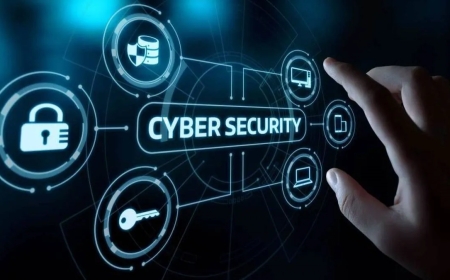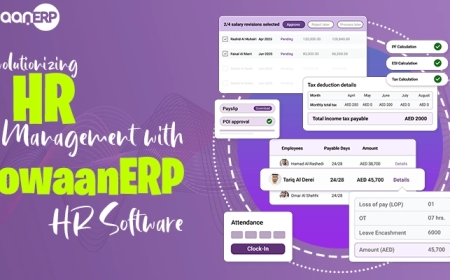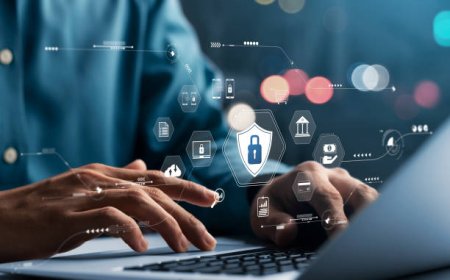Public Safety Solution and Cybersecurity: Bridging the Gap
The Public Safety Solution market was valued at USD 22.05 Billion in 2023 and is expected to reach USD 47.95 Billion by 2031, growing at a CAGR of 7.54% (2024-2031). Get insights on trends, segmentation, and key players with Data Bridge Market Research Reports.

Introduction
In todays hyperconnected world, the importance of public safety solutions has never been greater. Whether its emergency response systems, city surveillance, or critical infrastructure protection, public safety technologies play a pivotal role in maintaining societal security and well-being. However, as these systems increasingly rely on digital infrastructure and interconnected networks, they also become prime targets for cyberattacks. This intersection between public safety and cybersecurity demands urgent attention to bridge the gap and ensure that safety solutions are resilient, trustworthy, and secure.
Definition
A Public Safety Solution refers to a set of technologies, strategies, and services designed to protect communities by enhancing emergency response, crime prevention, and disaster management. These solutions integrate communication systems, surveillance, data analytics, and coordination tools to help law enforcement, firefighters, medical responders, and other agencies act quickly and effectively to ensure public safety and security.
The Growing Dependence on Technology in Public Safety
Modern public safety solutions leverage advanced technologies such as IoT (Internet of Things) sensors, AI-powered surveillance cameras, cloud computing, and data analytics. These technologies enable faster incident detection, real-time situational awareness, and coordinated emergency responses. For example:
-
Smart surveillance systems use AI to detect unusual behavior or threats in crowded places.
-
Emergency alert platforms use mobile and social media channels to disseminate warnings quickly.
-
Connected sensors monitor infrastructure conditions, like bridges and power grids, to predict failures and prevent disasters.
While these innovations dramatically improve public safety capabilities, they also increase the attack surface for cyber threats. The reliance on networked devices and cloud-based platforms creates vulnerabilities that malicious actors can exploit.
Why Cybersecurity Matters for Public Safety
Cybersecurity in public safety is not just about protecting data; its about protecting lives. A successful cyberattack on a public safety system could disrupt emergency communications, disable surveillance cameras, or even manipulate critical infrastructure controls. The consequences could be catastrophic, resulting in delayed responses to emergencies, increased crime, or widespread chaos.
Some notable risks include:
-
Ransomware attacks locking emergency service systems or communication networks.
-
Data breaches exposing sensitive information about citizens or first responders.
-
IoT device hijacking allowing attackers to control cameras, alarms, or sensors.
-
False data injection misleading authorities with inaccurate information during crises.
Because public safety systems often involve multiple agencies and jurisdictions, the complexity of securing these networks increases exponentially. A weak link in one component can compromise the entire ecosystem.
The Gap Between Public Safety Solutions and Cybersecurity
Despite the critical need for cybersecurity, many public safety organizations struggle to keep pace with evolving cyber threats. There are several reasons for this gap:
1. Legacy Systems and Infrastructure
Many public safety agencies operate legacy systems that were never designed with cybersecurity in mind. These outdated systems may lack basic security features such as encryption, authentication, or regular patching. Replacing or upgrading them requires significant funding and coordination, which is often challenging.
2. Limited Cybersecurity Expertise
Public safety agencies tend to focus on physical security and emergency response expertise. Cybersecurity requires specialized knowledge and continuous training, which may be scarce or underfunded in these organizations.
3. Fragmented Systems and Lack of Coordination
Public safety solutions often consist of a patchwork of technologies from different vendors and departments. Without standardized cybersecurity protocols and communication channels, coordinating a unified defense strategy is difficult.
4. Budget Constraints
Cybersecurity investments compete with other critical priorities in public safety, such as personnel, equipment, and training. Budget limitations can delay the adoption of modern security technologies or hiring of cybersecurity professionals.
5. Evolving Threat Landscape
Cyber threats are constantly evolving in sophistication and scale. Public safety agencies may find it difficult to keep up with the latest threat intelligence, attack methods, and defensive technologies.
Bridging the Gap: Strategies for Integrating Cybersecurity with Public Safety Solutions
Closing the gap between public safety and cybersecurity requires a comprehensive approach that blends technology, policy, and culture. Here are key strategies to bridge this divide:
Adopt a Security-First Mindset in Public Safety Technology Design:
Cybersecurity should be embedded from the ground up in all public safety technologies. This includes:
-
Secure coding practices to minimize software vulnerabilities.
-
End-to-end encryption to protect communication channels.
-
Strong authentication and access controls for devices and systems.
-
Regular software updates and patch management to address emerging threats.
Vendors of public safety technologies must adhere to stringent security standards and certifications.
Implement Comprehensive Cybersecurity Training and Awareness:
Training is vital not only for IT teams but also for first responders, dispatchers, and administrative staff. Everyone involved in public safety operations should understand the basics of cyber hygiene, recognizing phishing attempts, reporting suspicious activity, and following security protocols.
Foster Collaboration Across Agencies and Sectors:
Cybersecurity in public safety is a collective responsibility. Local, state, and federal agencies, as well as private sector partners, must share threat intelligence, best practices, and resources. Establishing joint cybersecurity task forces and communication channels can enhance coordinated defenses.
Invest in Cybersecurity Technologies and Monitoring:
Public safety organizations should leverage modern cybersecurity tools such as:
-
Intrusion detection and prevention systems (IDPS)
-
Security information and event management (SIEM)
-
Endpoint detection and response (EDR) solutions
-
Threat intelligence platforms
Real-time monitoring and automated threat response can mitigate attacks before they cause damage.
Develop Incident Response and Recovery Plans:
Preparedness is critical. Public safety agencies should establish clear incident response plans that outline roles, communication protocols, and recovery steps in the event of a cyber incident. Regular drills and simulations help test readiness and improve resilience.
Secure IoT Devices and Critical Infrastructure:
Since many public safety solutions depend on IoT devices, securing these endpoints is essential. This includes:
-
Changing default passwords and disabling unnecessary features.
-
Segmenting IoT networks from core systems.
-
Applying firmware updates promptly.
-
Using device authentication and secure communication protocols.
Critical infrastructure components like power grids, water systems, and transportation must be safeguarded with robust cybersecurity controls.
Real-World Examples: Lessons Learned
Several high-profile incidents have highlighted the importance of cybersecurity in public safety:
-
Baltimore ransomware attack (2019): The citys emergency response and public safety services were severely disrupted by ransomware, leading to weeks of service outages and millions in recovery costs.
-
Dallas 911 system outage (2023): A cyberattack on the 911 dispatch system resulted in delayed emergency calls, exposing vulnerabilities in emergency communication infrastructure.
-
Water treatment facility hack attempts: Several municipalities have reported attempts by hackers to manipulate water treatment controls, underscoring risks to public health and safety.
These examples serve as warnings that public safety cannot afford to neglect cybersecurity.
The Future of Public Safety and Cybersecurity
As technology continues to evolve, the integration of public safety and cybersecurity will deepen. Emerging trends include:
-
Artificial Intelligence (AI): AI can enhance threat detection and automate responses to cyber incidents.
-
Zero Trust Architecture: Adopting zero trust principles ensures that no user or device is trusted by default, reducing insider threats.
-
Blockchain: Distributed ledger technologies may offer secure data sharing and authentication for public safety systems.
-
5G and Edge Computing: These technologies will enable faster, more reliable communications but also require new security frameworks.
Governments and organizations must stay proactive and agile to adapt to these innovations while maintaining robust defenses.
Growth Rate of Public Safety Solution Market
According to Data Bridge Market Research, with a compound annual growth rate (CAGR) of 7.54% from 2024 to 2031, the global public safety solution market is expected to grow from its 2023 valuation of USD 22.05 billion to USD 47.95 billion by 2031.
Read More: https://www.databridgemarketresearch.com/reports/global-public-safety-solution-market
Conclusion
Public safety solutions are indispensable for protecting communities, but their growing reliance on digital technologies creates a cybersecurity imperative. Bridging the gap between public safety and cybersecurity requires a multi-faceted approach that includes secure technology design, training, collaboration, investment, and preparedness. By prioritizing cybersecurity alongside physical safety, public safety agencies can build resilient systems that safeguard not only data and infrastructure but also the lives and well-being of the people they serve.




































